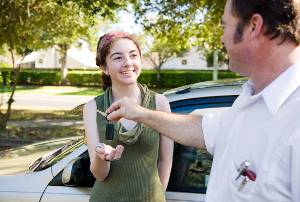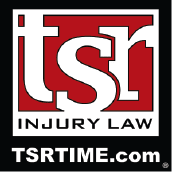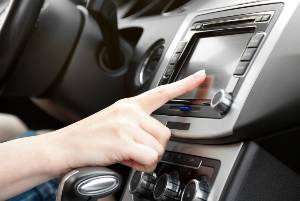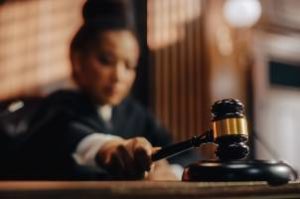Can Parents Be Held Liable for Crash Damages Caused by Their Teenage Driver?
 When parents hand the car keys to their kids, they are not necessarily handing over responsibility for damages if their teenagers cause a crash. Parents could bear liability for these crashes, depending on certain factors, such as whether the parents own the car. (Many teenagers drive cars owned by their parents.)
When parents hand the car keys to their kids, they are not necessarily handing over responsibility for damages if their teenagers cause a crash. Parents could bear liability for these crashes, depending on certain factors, such as whether the parents own the car. (Many teenagers drive cars owned by their parents.)
If you were injured in a collision with a teenage driver, TSR Injury Law is ready to help you seek compensation. We can determine if the driver’s parents may be liable for damages and negotiate with the insurance companies on your behalf. There are no upfront fees to hire our firm and no fees while we work to pursue the compensation you need.
Need legal help after a crash? Call TSR today: (612) TSR-TIME.
Liability for Teenage Driver Crashes
In Minnesota, liability coverage and uninsured/underinsured motorist coverage follow the car, not the driver. If the car the teenager was driving is owned by the teenager’s parents, the parents may be liable for damages caused in the crash. That means you, as the victim of the crash, may be able to file a claim against the parents’ liability insurance.
Even if the child is 18 years old, parents may have liability if they still own the car.
When parents do not own the at fault car, they are usually not held liable for damages caused by their teenage driver. Parents cannot insure a car unless they are listed as the owners.
Parents can also be held liable if they own the car and their teen driver allows someone else to drive it. Minnesota follows the “initial permission” rule. If permission is granted to drive a car, even if the permission is abused (for example it is ok to drive the car to the store but nowhere else and the driver takes off to Wisconsin and causes a crash) the owner of the car is liable for all damages caused.
What if the Teenager Did Not Have Permission to Drive the Car?
Sometimes teenagers decide to drive their parents’ car without permission. However, the term permission is not always clear. For example, if the parents allowed their child access to the car, but one day did not grant permission yet left the keys to the car in a place where the teenager could easily get a hold of them, that’s permission. The parents could be held liable for damages if their teenager causes a crash.
If a teenager has a drug or alcohol problem or mental health issues, the parents should take reasonable steps to try to prevent this person from getting behind the wheel of a car they own. Parents may be held liable if they make no attempt to prevent their teenager from driving, and he or she crashes their car. This may include locking up the keys or keeping the keys with them.
Insurance companies often deny coverages when children take the parent’s car without explicit permission. Litigation with discovery often unearths the truth and coverage can be established.
Crash victims should strongly consider hiring an attorney to help them pursue compensation. The experienced Bloomington car accident lawyers at TSR Injury Law know how to dispute arguments the at-fault party and their insurance company may make.
Negligent Entrustment
Sometimes a teenager is known to be an unusually dangerous driver. For example, the teenager may have a suspended license because he or she has been in numerous crashes or received numerous traffic tickets. The teenager may also have other issues, such as the substance abuse problems mentioned in the previous section.
If parents allow a teenager with this kind of record to drive their car and the teenager causes a crash, it could be considered negligent entrustment.
What if the Teenager was Engaged in Criminal Negligence?
You may have heard that car insurance companies may void coverage if their policyholder was engaged in criminal behavior. This raises the following question: Could a teenager’s parents not bear liability because their teenager was committing a crime?
This is a complex question that should be discussed with an experienced attorney. You should not take the insurance company’s word for it that the insurance policy has been voided.
The insurance company may say that the teenager driving drunk or on drugs voids the insurance policy. However, insurance should still apply because the insurance company would have a hard time arguing the teenager intentionally caused the crash.
Contact TSR Injury Law After a Car Crash
You do not need to try to seek compensation on your own. You do not need the stress of trying to manage the legal process and dealing with the insurance company.
TSR Injury Law’s trusted attorneys have been working with car crash victims for decades, securing compensation for victims of a wide range of collisions. We know how to investigate crashes, gather evidence, evaluate your damages, and aggressively negotiate with insurance companies. We are also prepared to take cases to court and have done so successfully many times.
No upfront fees or legal obligations. Contact us to learn more: (612) TSR-TIME.


 Ever wonder if all the touchscreens and interactive features in newer cars is contributing to distracted driving?
Ever wonder if all the touchscreens and interactive features in newer cars is contributing to distracted driving? There are various things that can affect the value of a car crash claim. They include the type and severity of the injuries suffered, how you respond to treatment, wage loss from injuries, the insurance policy limits, and more.
There are various things that can affect the value of a car crash claim. They include the type and severity of the injuries suffered, how you respond to treatment, wage loss from injuries, the insurance policy limits, and more. There is a common misconception that if you hire a lawyer after suffering a personal injury you will need to go to court to recover compensation. Typically, cases are resolved without needing to go to court, as the victim’s attorney can reach a settlement with the liable insurance company.
There is a common misconception that if you hire a lawyer after suffering a personal injury you will need to go to court to recover compensation. Typically, cases are resolved without needing to go to court, as the victim’s attorney can reach a settlement with the liable insurance company.